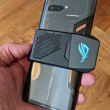Review: Google Pixel 2
Oct 26, 2017, 11:15 AM by Eric M. Zeman
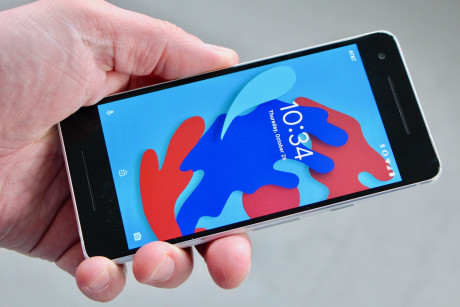
The Google Pixel 2, made by HTC, is a compact smartphone that merges a metal design with a medium-sized screen. Other stand-out features include squeezable sides to call up the Google Assistant and a rapid fingerprint reader. Android 8 Oreo on the Pixel 2 is the purest software experience available on a modern smartphone. Here is Phone Scoop's in-depth look at the smaller Pixel 2.
Hardware
Is It Your Type?
The Pixel 2 from Google is a high-end handset that includes a powerful camera, a mid-sized screen, a metal design, and a pure Google experience that comes with the promise of speedy software updates. It represents what Google thinks Android is all about. If you want the most Google-y Google phone, the Pixel 2 is it.
Preface
Google releases a new set of Google-branded smartphones each fall. Through 2015, these devices bore the Nexus nameplate, but Google changed things up in 2016 with the Pixel. Nexus or Pixel, the point remains the same: offer Android enthusiasts good hardware to showcase the best of Google's software. This year's Pixel 2 and Pixel 2 XL run the same software, but straddle the currently evolving smartphone form factor. Where the Pixel 2 is slightly smaller and relies on the older 16:9 aspect ratio display, the Pixel 2 XL is larger and moves to the 2:1 (or 18:9 if you prefer) aspect ratio screen that's being adopted by today's most popular flagships. HTC makes the Pixel 2, while LG makes the larger Pixel 2 XL.
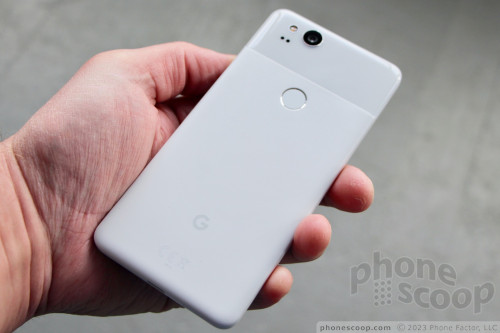
Body
Google's handsets have always embodied a minimalist, modern design. Sometimes it works and sometimes it doesn't. The Pixel 2 is clearly an evolved version of last year's Pixel. It's a compact slab made from metal and glass with an odd glass panel on the rear surface.
To my eyes, this phone's HTC lineage is clear. Put it next to pretty much any Desire series device from HTC and you'll see what I mean. The Pixel 2 is not as curvy as the larger 2 XL. The glass is gently, gently rounded where it fits into the metal frame, which has a nice chamfer to give the phone's face some visual pop. The Pixel 2 has a simple, clean design.
The phone is compact. In fact, thanks to the 5-inch screen, it's one of the smallest phones I've held in recent memory. It's slim and light. Most everyone should be able to hold and use this phone one-handed. It easily fits into pockets and is painless to carry around.
HTC did a fine job manufacturing the phone. The glass and metal pieces are formed perfectly and fit together well. I have no complaints about the materials. I will say this: the metal chassis has a unique paint job that makes it feel less like metal and more like … ceramic.
I can't say I fully understand Google's thinking with respect to the display shape. The Pixel 2 has a 16:9 screen, which means the face is full of bezel. Thick bands frame the top and bottom of the display, and there are also noticeable bezels along the sides. (Possibly to accommodate the squeeze sensors.) The 16:9 display gives the Pixel 2 a dated look compared to the Pixel 2 XL. (Why go with different aspect ratios on these phones? My guess is to appease developers.) Wide slits are carved into the Pixel 2's forehead and chin for the stereo speakers.
The screen lock and volume buttons on the right edge have excellent profiles. Google positioned the screen lock button near the top and put the volume toggle in the middle. I wish this arrangement were reversed. The screen lock button has perfect travel and feedback, but the volume toggle is a bit mushy. The SIM tray is on the left edge of the phone. It's a shame the Pixel 2 doesn't support memory cards.
The USB-C port is on the bottom. There's no headphone jack, a first for a Nexus/Pixel phone. Surely that will bug some people. On the flip slide, the 2 is the first Pixel that's water resistant to 3 feet (for 30 minutes). You win some, you lose some.
The rear panel is about 80% metal and 20% glass. The glass houses the camera module, flash, and sensors, all of which are plainly visible. The camera sticks out a bit from the surface of the glass. It has a chrome rim that calls it out visually. The dual-LED flash also has a chrome rim. The fingerprint reader is located perfectly. It is indented a bit and I had no trouble finding and using it without looking.

The Pixel 2's chassis is a milled from a single piece of aluminum and thus cannot be opened; the battery is sealed inside.
The Pixel 2 is a fine piece of hardware. It definitely isn't the sexiest thing I've ever seen, but Google devices are more about the software than the hardware. Other than perhaps the too-big bezels, there's nothing about the Pixel 2 that I really dislike.
Screen
The 2's display measures 5 inches across the diagonal and packs full HD (1,920 x 1,080) resolution. It's small. Google could have fit a much larger display into this body, but instead you're looking at the large bezels all around. The newest competing phones of a similar size offer more screen.
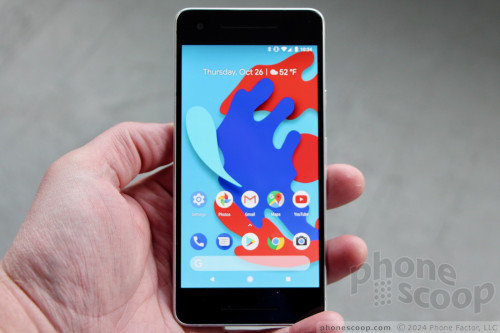
HTC typically uses LCD screens, but Google selected an AMOLED panel for the Pixel 2. I found it to be bright and sharp. I was able to use the Pixel 2 indoors and out with no trouble at all. In fact, the screen was easily visible outdoors even with the brightness set fairly low. Colors are not oversaturated, as they tend to be on most AMOLED panels, and look more natural instead. Sharpness is excellent. On-screen elements are crisp and individual pixels are truly invisible. Viewing angles are just okay. There's an obvious blue shift when you tilt the phone to and fro, though it's not nearly as bad as that of the Pixel 2 XL.
The full HD resolution means the Pixel 2 isn't necessarily ideal for virtual reality, a really curious thing considering that the phone is compatible with Google' Daydream VR platform. Quad HD would be much better for VR.
Signal
Verizon is the only carrier that actually sells the Pixel 2, but the phone is available directly from Google unlocked with support for a generous number of LTE bands. For example, it covers T-Mobile's Band 66, though not Band 71. I tested the Pixel 2 on AT&T and T-Mobile in the metro NYC area and was generally pleased with the results.
The phone maintained a connection to both networks in strong and weak coverage areas alike. I had no trouble connecting calls under poor network conditions. The Pixel 2 held onto a call on AT&T's network during a lengthy highway drive without issue, though the same drive resulted in one dropped call on T-Mobile's network. This is on par with other phones I've tested on the same route.
Data performance was excellent. With support for Cat 15 LTE, the Pixel 2 is one of the quicker devices I've tested in recent months.
Sound
The Pixel 2 is a decent voice phone, though it falls short of being truly good. The earpiece doesn't produce quite enough volume. I had trouble hearing calls in noisy spaces such as coffee shops and city streets, even with the volume all the way up. Clarity ranged from poor to good. Calls on AT&T's network were generally a bit clearer than those on T-Mobile's network, but that's splitting hairs. The earpiece didn't suffer from distortion even at high volumes, but voices had a bit of a robotic sound coming through the speaker. Those I spoke to through the Pixel 2 said I sounded very good.
The speakerphone is very loud and clarity is acceptable. I was able to hear calls in a moving car without much issue. You have to put the volume all the way up, and that introduces a small amount of distortion.
Ringers and alerts are incredibly loud. The vibrate alert did very well.
The phone has stereo speakers and I was pleased with their performance. The bottom speaker delivers a bit more volume than the top one, but it isn't too noticeable when holding the phone sideways. You can fill a small room with sound easily if you care to crank the Pixel 2 all the way up. I enjoyed watching some YouTube videos thanks to the stereo sound.
Battery
The Pixel 2's 2,700 mAh battery provides enough power to get the phone from breakfast to bedtime with just a bit of room to spare. I tested the 2 with all of the radios active and screen brightness set to about 50%. I worked the phone pretty hard. If one app put some hurt on the battery it was the camera, particularly recording video. On days I shot a lot of pictures the phone was more apt to call it quits an hour or two earlier.
The phone includes the basic Android battery-saver tool. The battery saver tones down the processor, brightness, notifications, and such. You can set it to come on automatically when the battery reaches 15% or 5%, or toggle it on manually. It helps a little bit.
The Pixel 2 supports Quick Charge 3.0 and it ships with a high-speed charger. Plug the phone in for as little as 20 minutes and you'll gain several hours of additional uptime. The mostly-metal rear panel precludes the phone from supporting wireless charging.
Bluetooth, GPS, NFC, WiFi
Most everyone will be satisfied with the Pixel 2's secondary radios.
The Pixel 2 is yet another to add support for Bluetooth 5.0. The phone connected to a wide range of accessories. It had no trouble managing Bluetooth headphones for calls or music. Calls made via Bluetooth headsets were acceptable, though far from good. Calls routed to my car's hands-free system were short of impressive, but got the job done. Music sounded very good through Bluetooth headphones and speakers.
The GPS radio was quick and accurate. The Pixel 2 often pegged me within 5 seconds and was accurate to within about 15 feet. The phone was a fine navigation tool, as the fast data performance and GPS accuracy meant it was spot-on when driving from Point A to Point B.
With NFC aboard, you can use the Pixel 2 to make mobile payments via Android Pay. I found it worked well where supported. The NFC radio also helps pairing with some Bluetooth accessories.
The 2's WiFi radio is very good.
Software
Lock Screen
The Pixel 2's lock screen evolves a bit when compared to last year's Pixel.

The absolute best addition is the Now Playing widget. When music is playing nearby you can elect to see the song name and artist, which shows up in small white text at the bottom of the screen. Now Playing works even when the device is offline and never sends songs or conversations to Google. It's freaking awesome. It works very quickly. According to Google, it has stored the necessary data of some 17,300 songs in a small 50 MB file to enable this tool. It's really, really handy.

The phone carries over the Ambient Display, which keeps the clock and day/date on the screen at all times. Thanks to the OLED display, this doesn't destroy your battery life the way it would with an LCD. You can turn the Ambient Display off if you wish.
You have the typical options for managing how much information is displayed by incoming messages, which means you can block them altogether or view the full contents when they arrive. My favorite option is in between. Picking the "hide sensitive content" setting means new emails, messages, or calls simply pop up as a small icon under the clock.
The lock screen itself is typical for an Android handset. A quick double tap on the display or press of the screen lock button wakes the screen and reveals a large digital clock with detailed notifications lined up beneath it. Notifications can be dismissed one at a time or en masse. The Quick Settings shade is accessible from the lock screen, and shortcuts to voice search and the camera are near the bottom.
The fingerprint reader is your best bet as far as security goes. I easily set up several fingerprints and the reader is quick and accurate. It's far quicker to use the fingerprint reader than type in a PIN or password, though those options are available, too. What's more, you can secure individual apps/folders with the fingerprint sensor, allowing you to add another layer of protection to your device.
Last, you can choose to use the fingerprint reader to open the notification shade. When using the phone, swipe down on the reader to open notifications, swipe up to close the shade.
Home Screens
The Pixel 2 ships with Android 8 Oreo, which revises the home screen experience a bit when compared to Android 7.
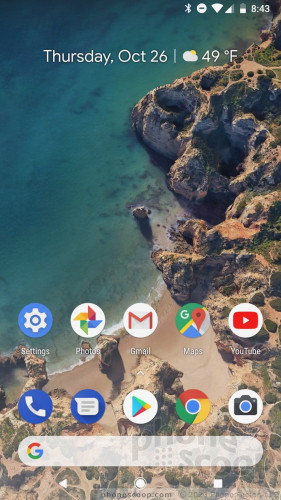
To start, the Google search bar is now at the very bottom of the screen, closest to your thumb. Five app shortcuts are situated above the search bar. Out of the box, a nice date widget crosses the top of the screen. One of the more obvious changes in Android 8 Oreo is the addition of notification dots. Apps that have notifications will display a small dot in the top right corner of the app icon. A firm press of the app icon will call up a window that lets you see the basics of those notifications, such as the most recently received email or text.
The left-most home screen is reserved for the Google Now panel, with subsequent panels laid out to the right. Google Now is different from Google Assistant. Google Now scans your calendar, email, location history and other personal data to offer suggestions about travel times, potential events, and so on. I like that it encapsulates the weather and news headlines, too. I've come to love Google Now over the last couple of years.
The settings menu of Android 8 Oreo drops colored text altogether and switches to dark gray text on a white background. Boo. (I liked the blue color of Nougat better.) I continue to appreciate that the settings menu provides more details so you can glean information (battery life, storage space) at a glance while perusing the settings screen.
The drop-down Quick Settings panel is unaltered from Nougat and is a cinch to use. The Pixel 2 includes the awesome Google Wallpaper app, which automatically rotates the home and lock screens through high-quality, themed wallpapers.
On the performance front, the Pixel 2 ships with Qualcomm's top processor, the Snapdragon 835, accompanied by a respectable 4 GB of RAM. This chip is amazing and the Pixel 2 chomps through everything without breaking into a sweat. I've never seen a phone download and install Play Store apps as swiftly as the Pixel 2. The phone is wicked fast.
Camera
You can launch the camera with a double-press of the screen lock button or via the lock screen shortcut. The camera opens lickety-split.
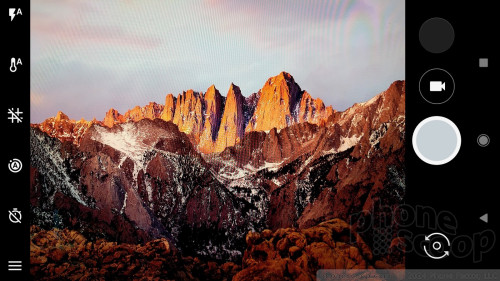
Google's camera app has a fairly basic feature set. There are just a few shooting modes: auto, slow motion, panorama, photo sphere, and the new one: portrait. I like having slow motion, but I'd also like to see timelapse or hyperlapse. The Pixel 2 does not include a manual mode, which is a pretty big omission for a flagship handset.
The portrait shooting mode is sort of an update to the old Lens Blur tool. Portrait lets you create shots where the subject is sharp, but the rest of the image is out of focus (sometimes called bokeh). With Google's old Lens Blur tool, users needed to move the camera while shooting to gather the needed perspective data to define the subject. That's all gone with portrait mode; you now just point and shoot (and hold still!)
The results are relatively good, though not always perfect. You can see in the shot of my daughters holding pumpkins how well-blurred the background is. Conversely, the shot of them standing in front of the corn stalks clearly has some background that's still in sharp focus.
It's impressive on a technical level, when you consider most other phone makers need two lenses to create the same or similar effect. This mode is easy to use and does a fine job relative to other phones offering this feature.
The motion photo tool is pretty much exactly like the 'Live Photos" feature seen on the iPhone and high-end Samsungs. The Pixel 2 captures two seconds of video before you press the shutter button so you get some motion in your image. You can share the really short video clip or remove the motion and keep the normal still image. The only thing I don't like about Google's version of this tool is that it zooms in quite a bit, (to ensure all the backgrounds line up,) which means you may lose the framing of your shot.

The Pixel 2 focuses and captures images in a blink. Need to shoot video? Swipe the screen and the 2 will jump to video mode. There aren't any special video modes, but you can select up to 4K resolution.
I like that you can easily switch between the selfie camera and the main camera by twisting the phone.
The camera is painless to use.
Photos
The Pixel has a 12-megapixel sensor with optical image stabilization, PDAF, and an aperture of f/1.8. Those are all good specs. The phone leans heavily on the Snapdragon 835's advanced image signal processor and its HDR+ mode to put those megapixels to more effective use than many other phones on the market. The phone also has a dedicated, custom image chip that Google plans to enable in the weeks ahead. Given how good the Pixel 2's images already are, I can't wait to see what this new chip does.
Like last year's Pixel, the Pixel 2 produces some of the best images to come from a smartphone. The basics — including focus, white balance, and exposure — are generally spot-on. The camera almost always did exactly what I wanted/expected it to do, even in challenging shots like bright sunlight or darkened performance spaces. I saw a small amount of grain in some low-light shots, but it's nothing egregious or worse than any other phone.
As noted above, the portrait shots are excellent. The live motion images are pretty good, too.
The Pixel 2's 8-megapixel user-facing camera does a very good job. The phone includes a screen-based flash that produces above-average white balance. It helps a lot.
You can shoot 4K video with the Pixel 2. I was pleased with the video I captured with the Pixel 2, and the 4K resolution looked great on my PC monitor.
Google is giving Pixel 2 owners unlimited, full-resolution storage in Google Photos for pictures and video. Shooting in 4K will eat up huge amounts of your phone's storage, but you can set Google Photos to "optimize" local storage by offloading files to Google's servers rather than keep them on the phone.
The Pixel 2 has a fine, fine camera that most people should be happy using for most occasions.
Squeezable Google Assistant
The Google Assistant gives the Pixel 2 a lot of its smarts. It ships with the phone and can be accessed by squeezing the sides of the phone. This is a feature Google borrowed from HTC, which gave a similar tool to its U11 flagship. How does it work?
It's pretty straightforward. Sensitive pressure sensors are placed in the sides of the phone. They can detect very small amounts of pressure, even when the phone is protected in a case. A short tutorial walks you through the process of setting up the squeeze action. You can determine the strength and length of the squeeze needed to activate Google Assistant. You'll need to squeeze the phone below its waistline.
While I like the general idea, the real-world experience doesn't live up to the hype. The biggest problem is accidental activation of Google Assistant. I can't tell you how many times I pulled the phone out of my pocket and accidentally triggered the Assistant because I grabbed the phone by its side edges. Simply gripping the phone too tightly can trigger Google Assistant. Worse, the action can't be customized. On HTC's own U11, the Edge Sense tool can be adjusted to perform a number of different actions. On the Pixel 2 only one action is available upon squeezing: launch Google Assistant. Meh.
Google Assistant itself is amazing. It's come a long, long way since it launched in mid-2016. I use it all the time on my Android devices to compose text messages and emails, spin playlists, and even take selfies.
Wrap-Up
The HTC-made Google Pixel 2 is a solid handset that might get lost in today's competitive landscape. HTC and Google designed and crafted a fine piece of hardware. The aluminum and glass materials are tightly put together and yet I feel the phone comes across as rather blocky and vanilla in a markets that grows curvier and more flavorful by the moment.
The 5-inch screen is decent for what it is, and thankfully it sidesteps the problems seen on the Pixel 2 XL. But it's small, and it's a shame that the full-HD resolution prevents it from being a quality VR tool.
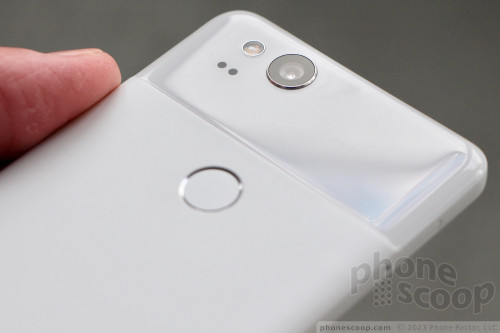
The software is the real story here and to that end I think Google has a success story on its hands. Android 8 Oreo as envisioned on the Pixel 2 is incredibly light on its feet. It makes everything easy to find and use. There's no doubt in my mind that the Pixel 2 offers the best Android experience to date.
Google did well with its updates to the camera app. The potrait mode is a welcome addition and it works just the right amount of magic into your camera roll. You can't ask for a more impressive camera phone right now.
With its smaller size and $649 price point, the Pixel 2 goes head-to-head with the Sony Xperia XZ1 Compact, Apple iPhone 8 and Samsung Galaxy S8. All three of these are fine options. What sets the Pixel 2 apart is its great software and superior camera. If you can deal with the ho-hum design, the Pixel 2 is worthy competitor in today's compact flagship space.

Comments
No messages


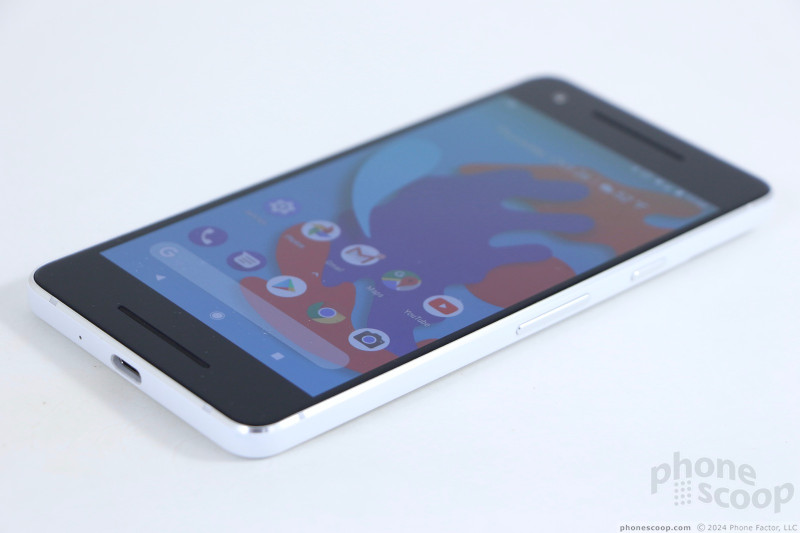



























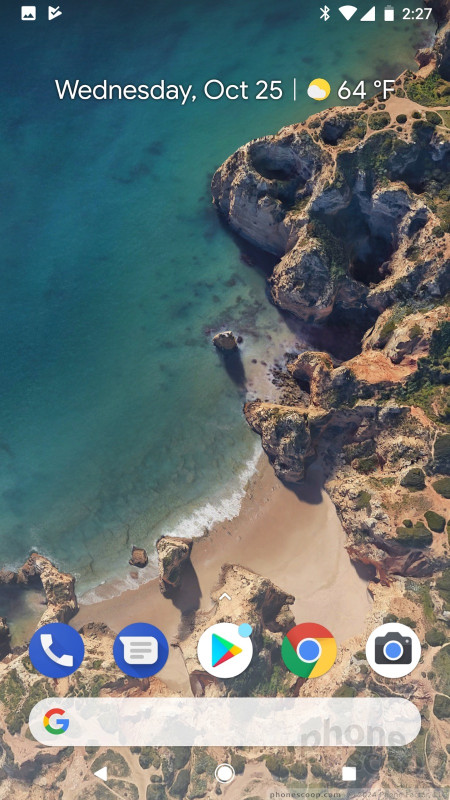





















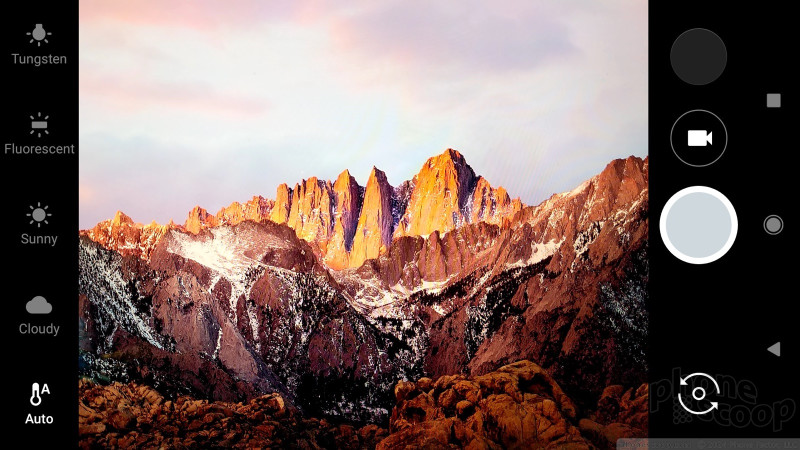


































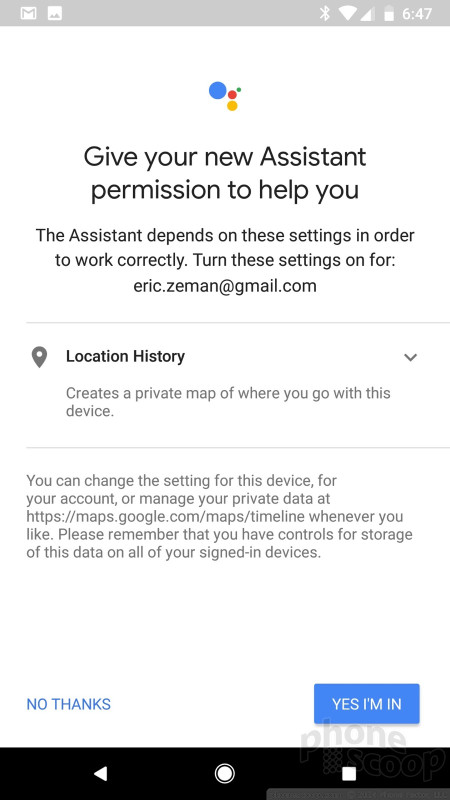




 Google Feature Drop Brings New Smarts to Pixels
Google Feature Drop Brings New Smarts to Pixels
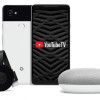 Verizon Running Promo for Half Off Pixel 2 or Galaxy S9
Verizon Running Promo for Half Off Pixel 2 or Galaxy S9
 Pixel's Motion Photos Can Now Be Exported as GIFs
Pixel's Motion Photos Can Now Be Exported as GIFs
 February Security Patch for Pixel 2 Phones Tweaks Performance Across the Board
February Security Patch for Pixel 2 Phones Tweaks Performance Across the Board
 Google Turning On Pixel Visual Core in All Pixel 2 Handsets
Google Turning On Pixel Visual Core in All Pixel 2 Handsets
 Google Pixel 2
Google Pixel 2



